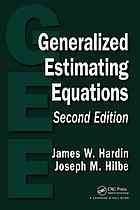

Most ebook files are in PDF format, so you can easily read them using various software such as Foxit Reader or directly on the Google Chrome browser.
Some ebook files are released by publishers in other formats such as .awz, .mobi, .epub, .fb2, etc. You may need to install specific software to read these formats on mobile/PC, such as Calibre.
Please read the tutorial at this link. https://ebooknice.com/page/post?id=faq
We offer FREE conversion to the popular formats you request; however, this may take some time. Therefore, right after payment, please email us, and we will try to provide the service as quickly as possible.
For some exceptional file formats or broken links (if any), please refrain from opening any disputes. Instead, email us first, and we will try to assist within a maximum of 6 hours.
EbookNice Team

Status:
Available5.0
16 reviews"CHAPTER 1 Preface Second Edition We are pleased to offer this second edition to Generalized Estimating Equations. This edition benefits from comments and suggestions from various sources given to us during the past ten years since the first edition was published. As a consequence, we have enhanced the text with a number of additions, including more detailed discussions of previously presented topics, program code for examples in text, and examination of entirely new topics related to GEE and the estimation of clustered and longitudinal models. We have also expanded discussion of various models associated with GEE; penalized GEE, survey GEE, and quasi-least squares regression, as well as the number of exercises given at the end of each chapter. We have also added material on hypothesis testing and diagnostics, including discussion of competing hierarchical models. We have also introduced more examples, and expanded the presentation of examples utilizing R software. The text has grown by 40 pages. This edition also introduces alternative models for ordered categorical outcomes and illustrates model selection approaches for choosing among various candidate specifications. We have expanded our coverage of model selection criterion measures and introduce an extension of the QIC measure which is applicable for choosing among working correlation structures (see 5.1.2 in particular). This is currently a subject of considerable interest among statisticians having an interest in GEE"--